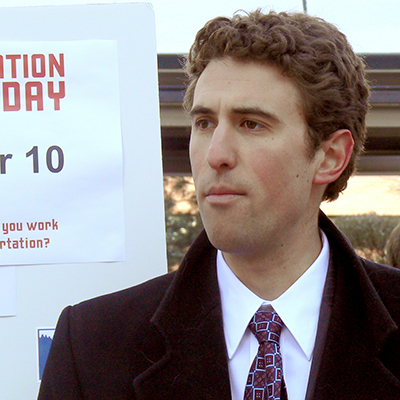
To reduce air pollution we need better travel options
We can't afford another summer of air pollution like this one. We need unprecedented collaboration on a local, state, and federal level to significantly expand clean travel options to tackle one of the largest contributing factors to our dirty air days - gas and diesel-powered vehicles. The clock is ticking. The solutions are out there.
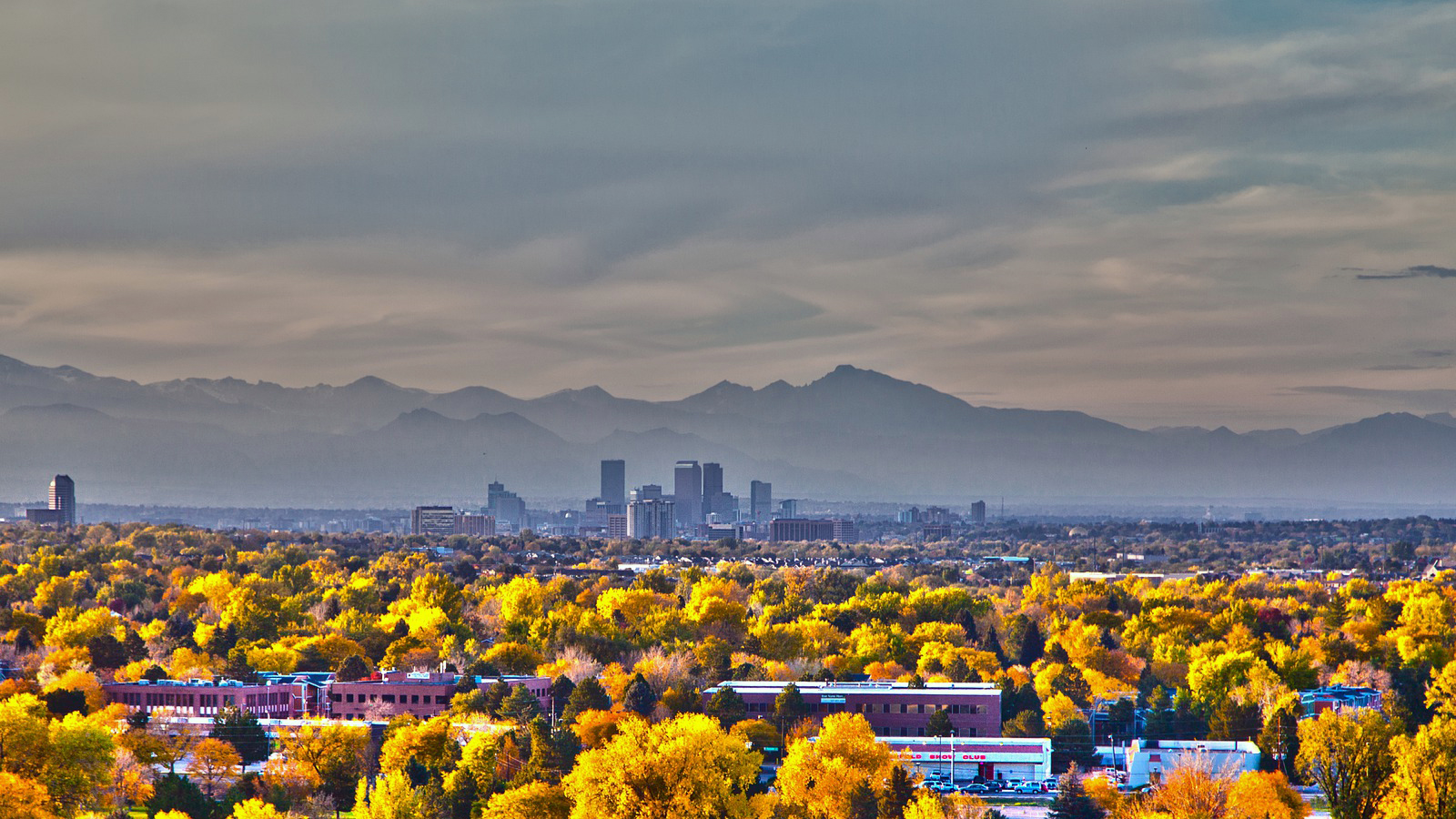
In the last few years, we’ve seen good clean transportation policies approved and pilot projects rolled out.
But the urgency of our air pollution problem requires a significant increase in the clean travel options people have access to.
That is going to take all levels of government to work more closely to weave together a set of strategies that fuel each other. No one entity or policy will solve this problem. We need unprecedented collaboration and focus to clean up our air
Here’s some of my ideas.
Increase transit service so more routes come every 15 minutes or less. A TransitCenter analysis found that a 40% increase in service for RTD would significantly expand the number of people who live along frequent routes and significantly increase the number of jobs within a 30-minute transit commute.
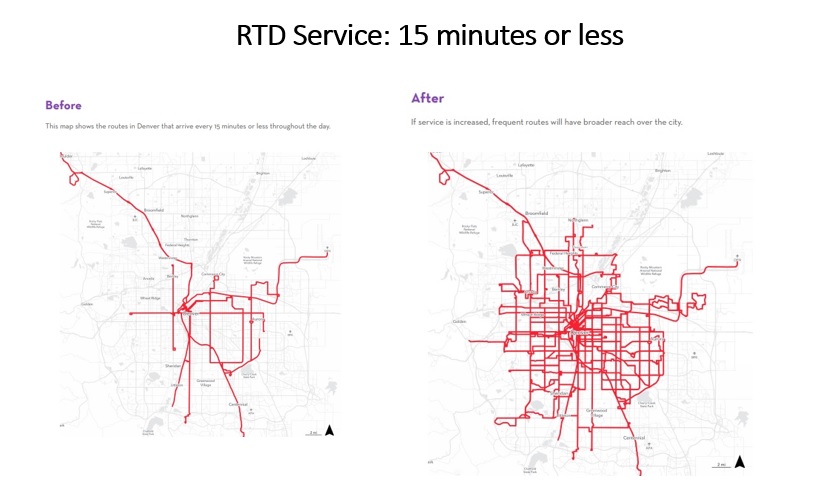
15 minute or less RTD service before and after a 40% increase Source Transit Center
Give people an e-bike in exchange for their gas-powered vehicle. Nearly half of trips in the DRCOG region are less than three miles, a trip that can be easily completed with an electric-powered bicycle. Assuming an average cost of $2,000, 20,000 gas-powered vehicles could be replaced with 20,000 e-bikes for approximately $40 million.
Another benefit of this program is it could help jump start the e-bike market. Working in partnership with organizations that partner with charities on car donations, some of the program could be paid for by selling parts of the donated gas vehicles (though for this to be a pollution reduction program the vehicles themselves could not be resold).
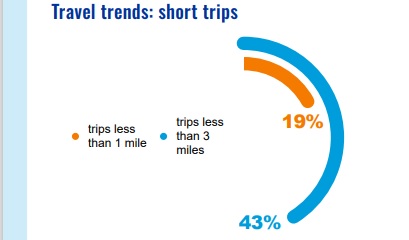
Travel trends short trips – DRCOG 2050 Metro Vision and Transportation Plan
Speed up the roll-out of daily bus rapid transit. The region should accelerate the construction and launch of bus rapid transit, which uses dedicated bus space similar to the lanes along U.S. 36 between Boulder and Denver. Examples of bus rapid transit projects that should be completed sooner include Colfax Ave, Colorado Boulevard and Federal Boulevard.
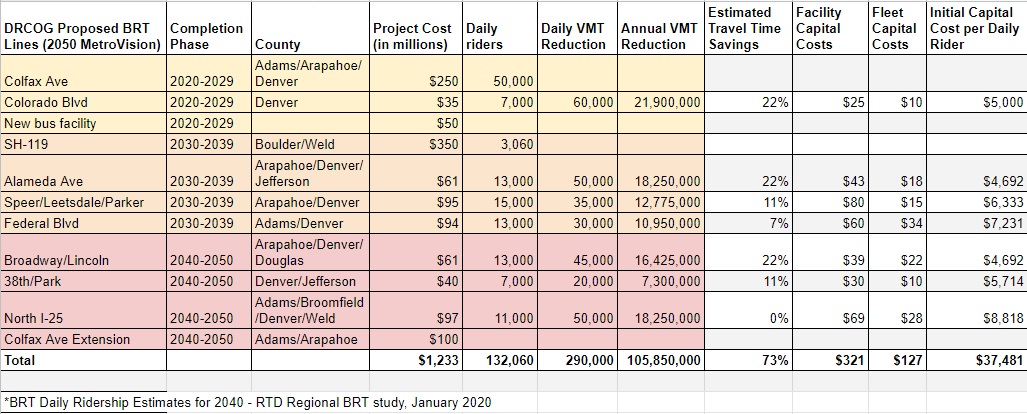
RTD BRT feasibility study Credit Matt Frommer, SWEEP
Expand electric vehicle car share programs. Locating more electric vehicle shared cars in neighborhoods could give more people an option to drive an electric vehicle during ozone alerts. It can also give people the option to get rid of their vehicle all together and save thousands of dollars a year in vehicle maintenance, insurance, and storage costs.
If each car share vehicle replaced 5-15 vehicles, adding 1,000 electric car shares in neighborhoods across the Front Range could replace 5,000-15,000 vehicles. These vehicles could be paired with the charging station investments cities, counties and utilities like Xcel Energy are making right now.
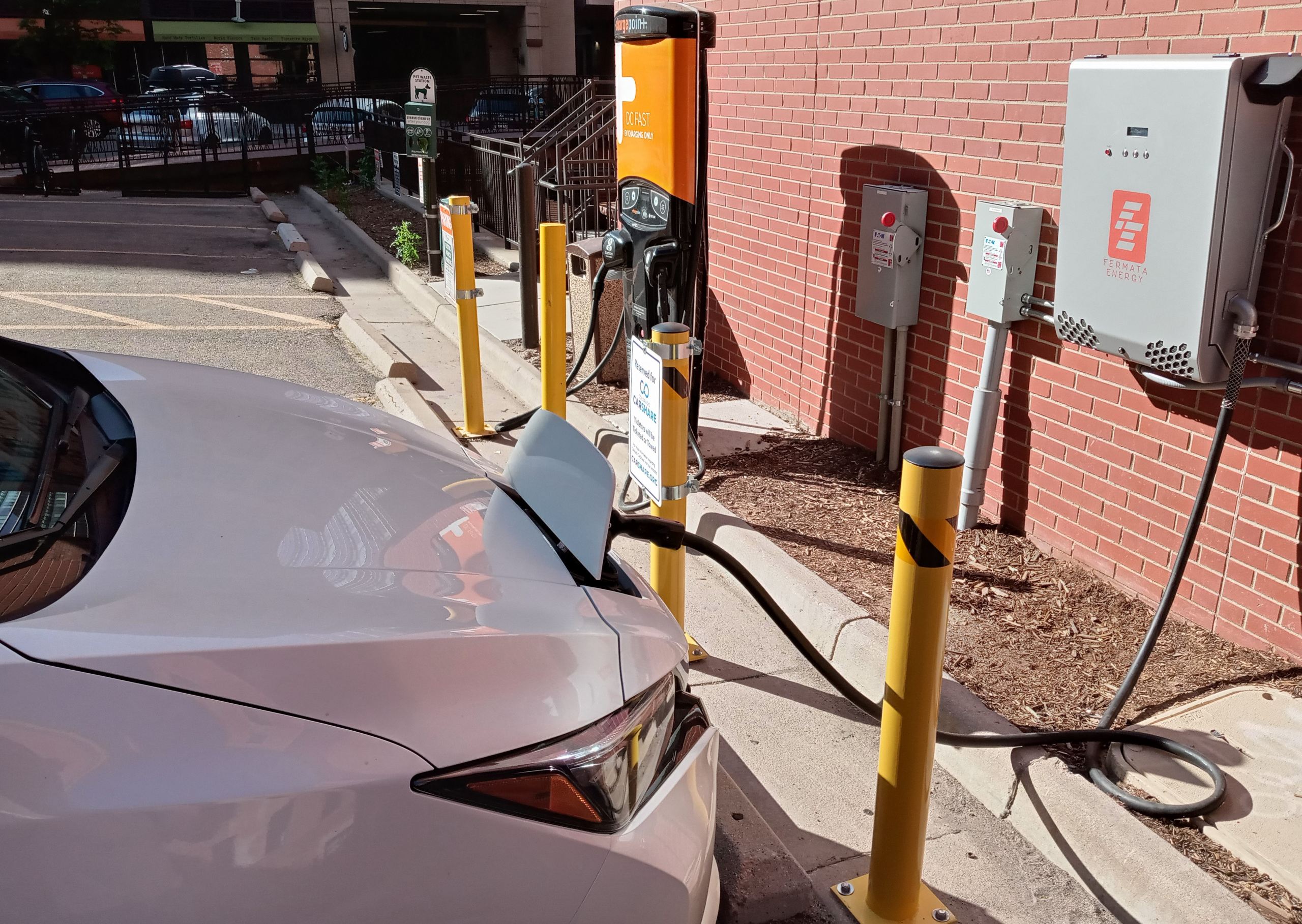
Electric vehicle car share in Denver at Alliance Center Credit: Staff
Expand micromobility programs like bike share and e-scooters to every city in the region. Whether someone lives here or is visiting, community bike share and e-scooter programs can increase options for people to get around without driving a gas vehicle. The WE-cycle program offers free 30 minute trips around Aspen, Basalt and Snowmass Village with a system that has 255 bikes and 49 stations. Denver launched a new micromobility program this summer and the City of Boulder just announced the deployment of 200 new e-scooters. Additional cities should build off these early micromobility programs so we can expand this option to every part of the region.
Adopt clean truck standards. Colorado has adopted both the Low Emission Vehicle (LEV) and Zero Emission Vehicle (ZEV) standards for light-duty vehicles. LEV requires car manufacturers to increase the fuel efficiency of vehicles, which reduces the ozone and greenhouse gas pollution each vehicle produces since it consumes less fuel per mile. ZEV requires car manufacturers to increase the number of clean, electric-powered passenger vehicles that are sent to car lots in Colorado.
Colorado should adopt the equivalent of those two standards for medium and heavy duty trucks. Known as the Heavy Duty Omnibus and Advanced Clean Truck rules, the first could reduce ozone forming NOx emissions from new diesel trucks by 90% by 2027 and the second could expand the options for even cleaner electric-powered trucks.
Adopt new transportation guidelines to reduce greenhouse gas emissions. Generally, when you reduce greenhouse gas emissions in the transportation space, you are also reducing pollutants that fuel ozone and dirty air days. A draft greenhouse gas rule released by CDOT last Friday, will be voted on by the CDOT Transportation Commission November 18. Done right, this rule can help Colorado prioritize better, increasing investments in clean transportation options like transit, biking, and walking, while also acknowledging the benefits of neighborhoods built in ways that give people clean travel options.
Upgrade every main street to be walkable and people friendly. In 2020, CDOT, in partnership with DRCOG and local governments, launched the Safer Main Street program focusing dollars on making main streets safer for people to navigate in the Denver metro area. It started with less than $100 million but saw additional investments and expansions at the legislature. From Boulder to Lone Tree and Morrison to Denver, the program is investing in exactly the kind of overlooked improvements that increase travel options and recruit people to get around without a car. Colorado should go even bigger on this program and commit to making every main street in Colorado people friendly in the next few years.
Mail everyone living in a nonattainment area a bus pass. This could break down barriers to riding transit and incentivize people to replace a trip in a car with a trip on a bus or train. The passes could come pre-loaded with a certain number of rides or could have free rides added during the summer ozone season.
Build it right the first time so every neighborhood has travel options. Every new development, whether commercial or residential, either has built in travel options or built in travel barriers. If a local government is going to approve new development, those developments should come with real travel options. This includes:
- All new developments should come “EV-ready” with the appropriate wiring and systems in place for the residents or businesses to add an electric-vehicle charger later. Installing EV-ready systems during construction is four to six times cheaper than having to add it later.
- All new developments should have ways to complete trips without a car. One way to do that would be to ensure a mixture of residential and commercial development within walking distance, so employees can access work and people can access coffee shops, restaurants, and other services without having to always drive. Another is to build in ways that foster easy access to transit and car share programs. Even if someone is not walking distance or doesn’t have easy access to transit, reducing the overall daily distance a community needs to drive can have a significant long-term impact on the state’s overall goal of reducing the growth in vehicle miles traveled by 10%.
- Communities without retail should get creative exploring everything from adding farmers market stalls to bringing electric-powered food trucks to their residents.
Focus transit support and additional options on the largest employers in the region. Transit and carpooling works best when it’s moving lots of people. We should identify the largest businesses and employers and try focusing additional transit service and benefits (like free bus passes) in those areas. For example, maximizing transit and carpool service for employees and users of Denver International Airport. Major employers should be partners, helping to develop the services that their employees will benefit from and committing to a goal for reducing the number of their workforce who utilize the services they help develop.
Add broadband and wifi capabilities in large buildings across the region to expand teleworking. Teleworking is not an option for every type of job. But to be able to even consider it, an employee and employer must have confidence there is enough broadband in their employee’s home. We should expand broadband access and wifi internet in large buildings, like apartments, where there are employees who could switch to a teleworking program. Focusing on places like apartments could increase the ability to cover a lot of people at once and reduce commuting trips in the heart of the nonattainment region.
In addition, employers should adopt remote work policies allowing employees who can to work remotely during ozone action alerts and beyond.
Convert arterial lanes in population centers to bus only lanes before and during ozone alerts. Reliable and fast bus service is a key to recruiting people to ride. In the short-term, leading up to or during an ozone alert day, cities should convert a lane of traffic to bus only and work with local transit agencies to ramp up bus service in the lanes during those days. In the long-term, cities should develop ways to increase the speed and reliability of bus service year round.
Authors
Danny Katz
Executive Director, CoPIRG
Danny has been the director of CoPIRG for over a decade. Danny co-authored a groundbreaking report on the state’s transit, walking and biking needs and is a co-author of the annual “State of Recycling” report. He also helped write a 2016 Denver initiative to create a public matching campaign finance program and led the early effort to eliminate predatory payday loans in Colorado. Danny serves on the Colorado Department of Transportation's (CDOT) Efficiency and Accountability Committee, CDOT's Transit and Rail Advisory Committee, RTD's Reimagine Advisory Committee, the Denver Moves Everyone Think Tank, and the I-70 Collaborative Effort. Danny lobbies federal, state and local elected officials on transportation electrification, multimodal transportation, zero waste, consumer protection and public health issues. He appears frequently in local media outlets and is active in a number of coalitions. He resides in Denver with his family, where he enjoys biking and skiing, the neighborhood food scene and raising chickens.